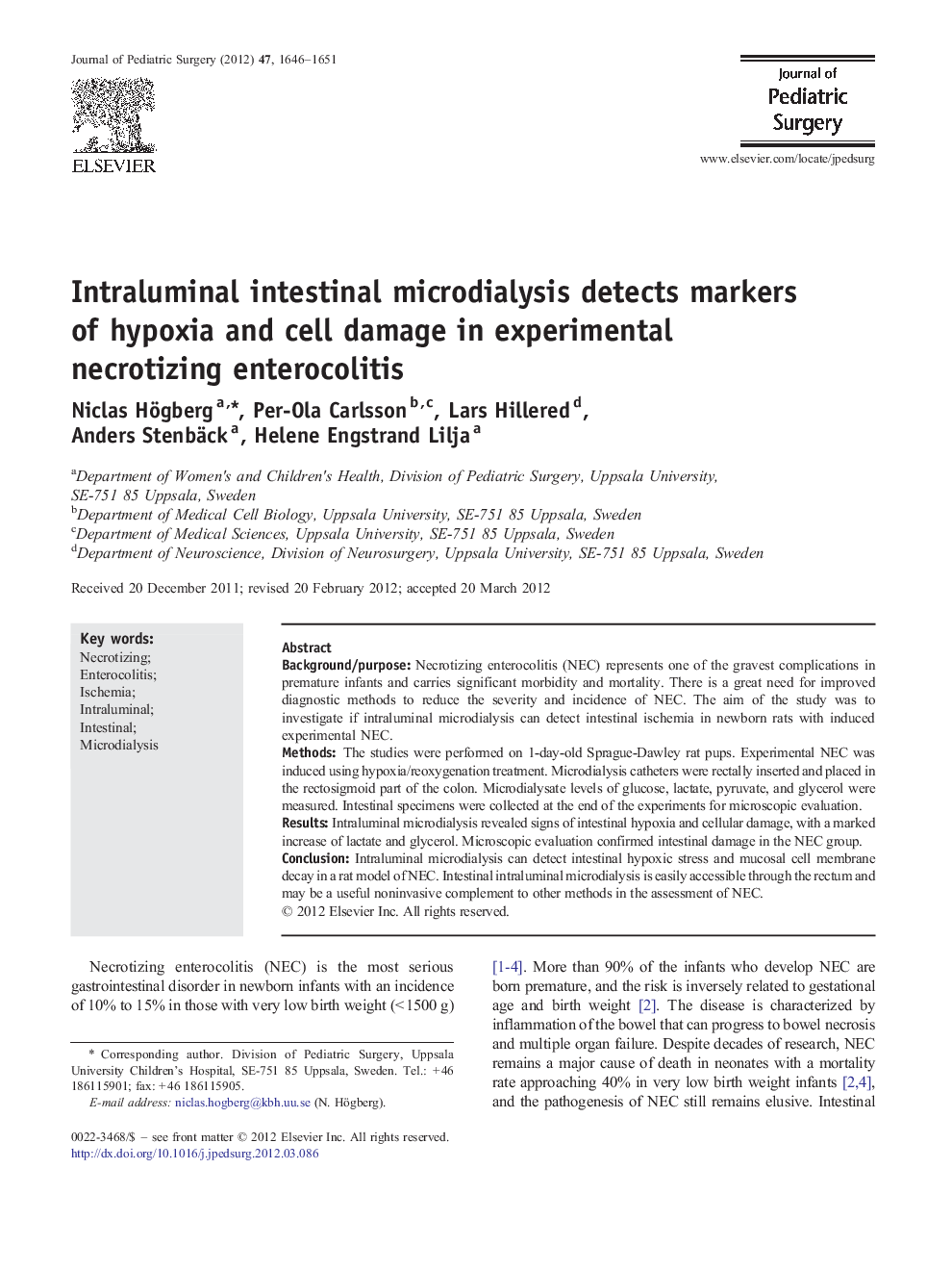| Article ID | Journal | Published Year | Pages | File Type |
|---|---|---|---|---|
| 6217748 | Journal of Pediatric Surgery | 2012 | 6 Pages |
Background/purposeNecrotizing enterocolitis (NEC) represents one of the gravest complications in premature infants and carries significant morbidity and mortality. There is a great need for improved diagnostic methods to reduce the severity and incidence of NEC. The aim of the study was to investigate if intraluminal microdialysis can detect intestinal ischemia in newborn rats with induced experimental NEC.MethodsThe studies were performed on 1-day-old Sprague-Dawley rat pups. Experimental NEC was induced using hypoxia/reoxygenation treatment. Microdialysis catheters were rectally inserted and placed in the rectosigmoid part of the colon. Microdialysate levels of glucose, lactate, pyruvate, and glycerol were measured. Intestinal specimens were collected at the end of the experiments for microscopic evaluation.ResultsIntraluminal microdialysis revealed signs of intestinal hypoxia and cellular damage, with a marked increase of lactate and glycerol. Microscopic evaluation confirmed intestinal damage in the NEC group.ConclusionIntraluminal microdialysis can detect intestinal hypoxic stress and mucosal cell membrane decay in a rat model of NEC. Intestinal intraluminal microdialysis is easily accessible through the rectum and may be a useful noninvasive complement to other methods in the assessment of NEC.
